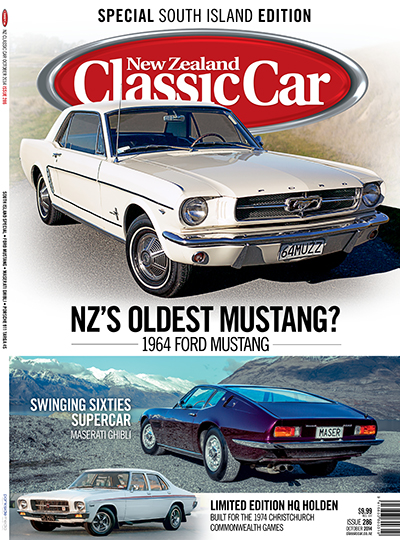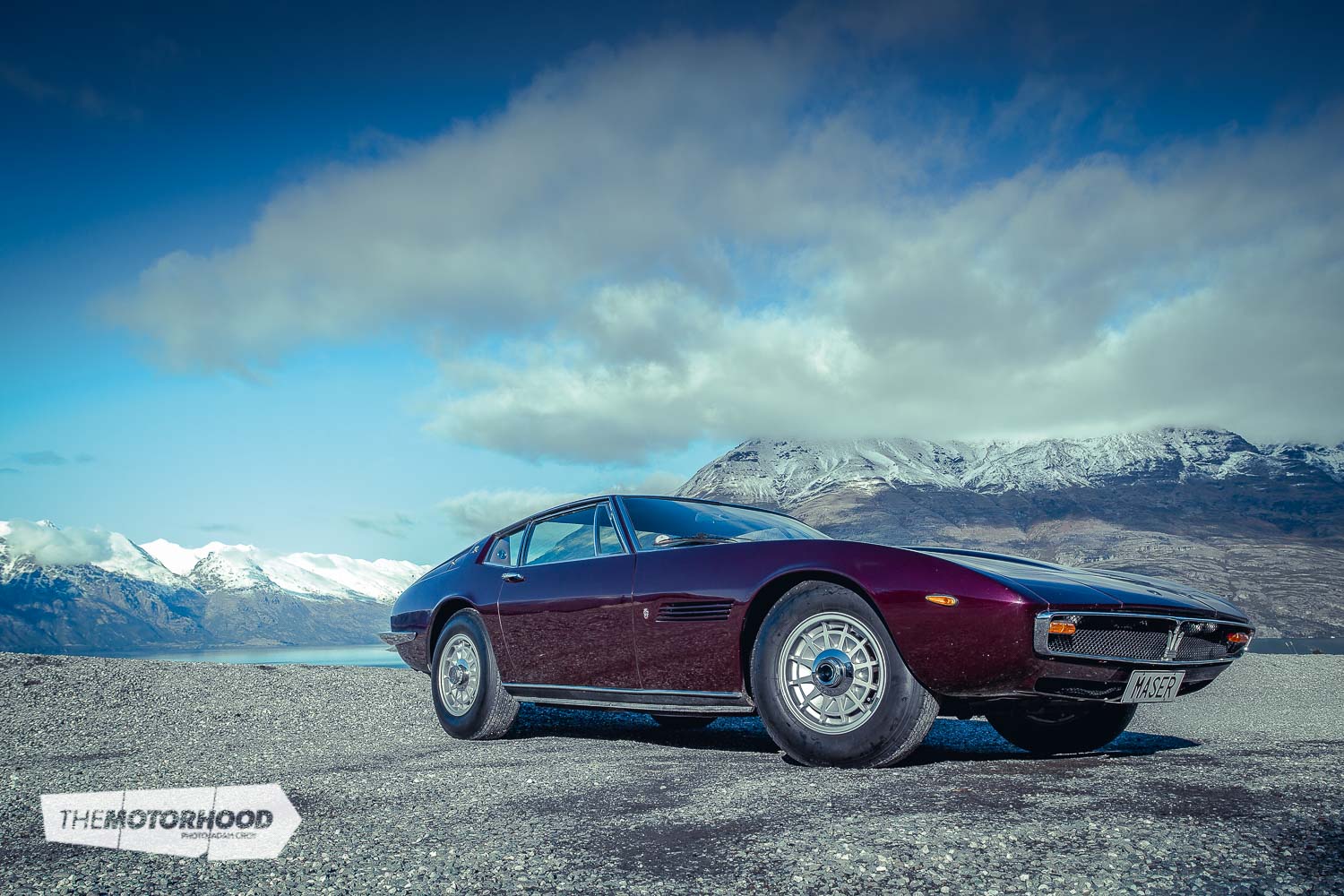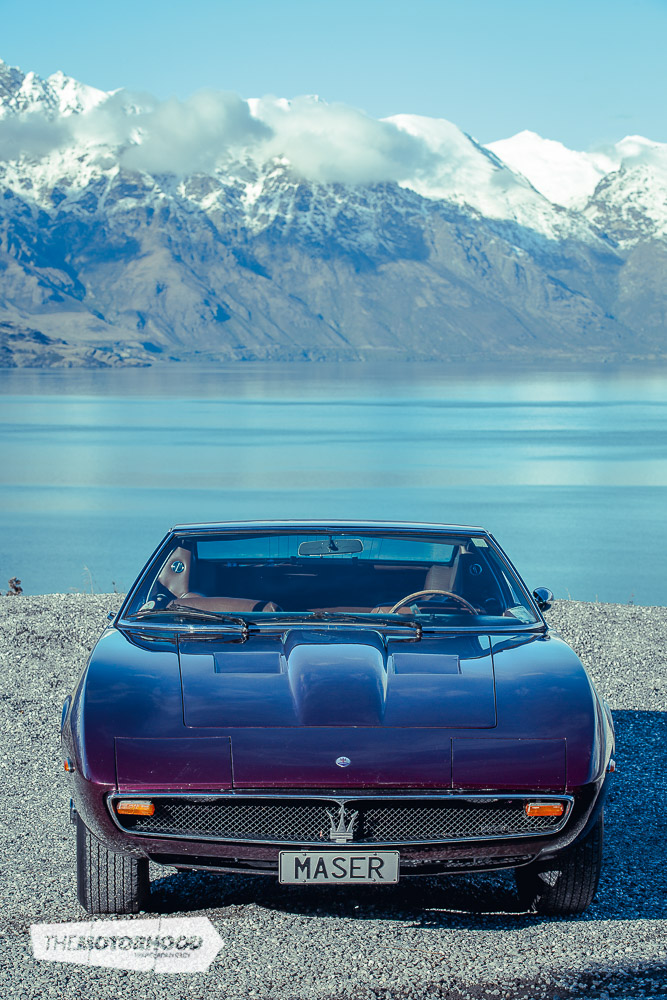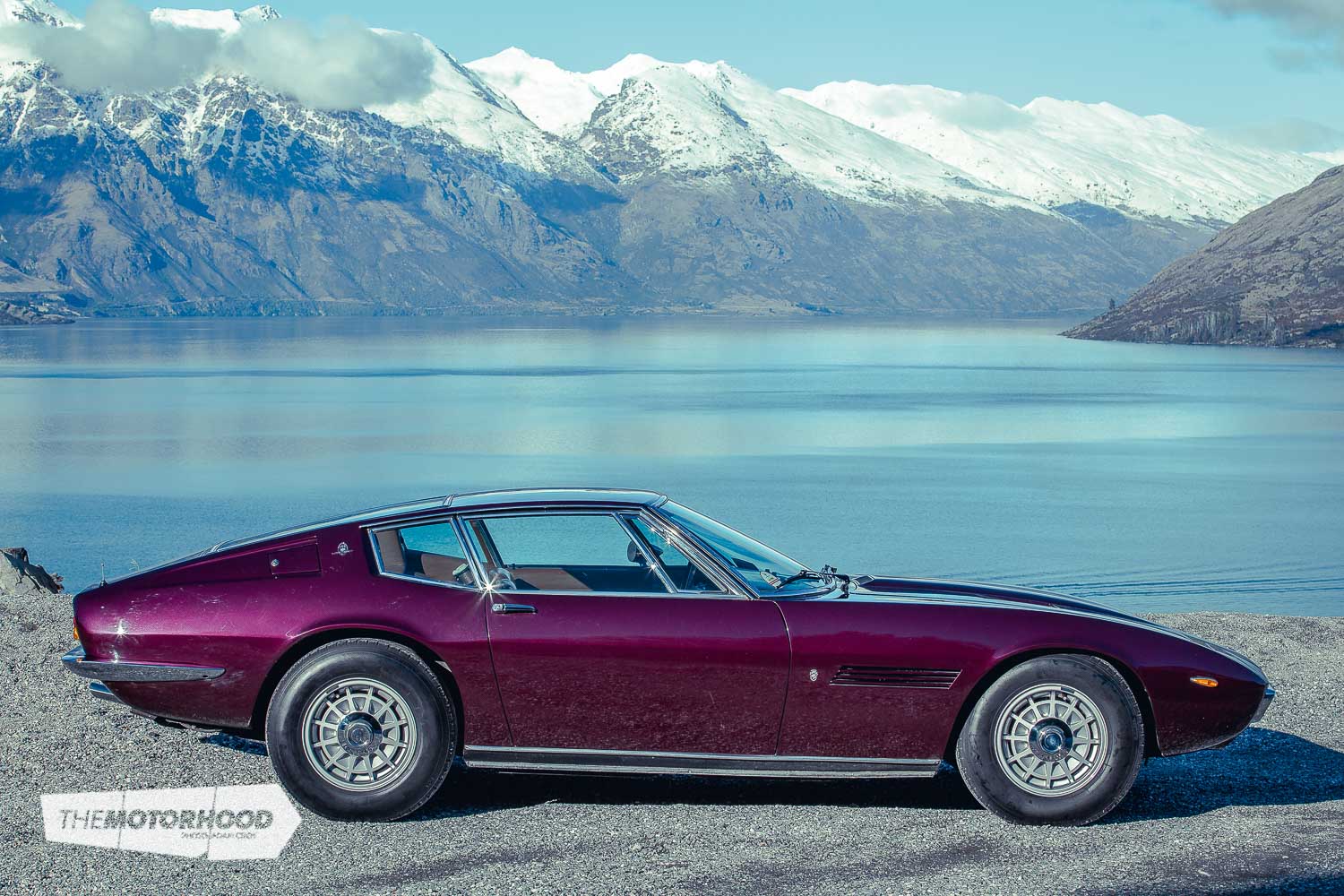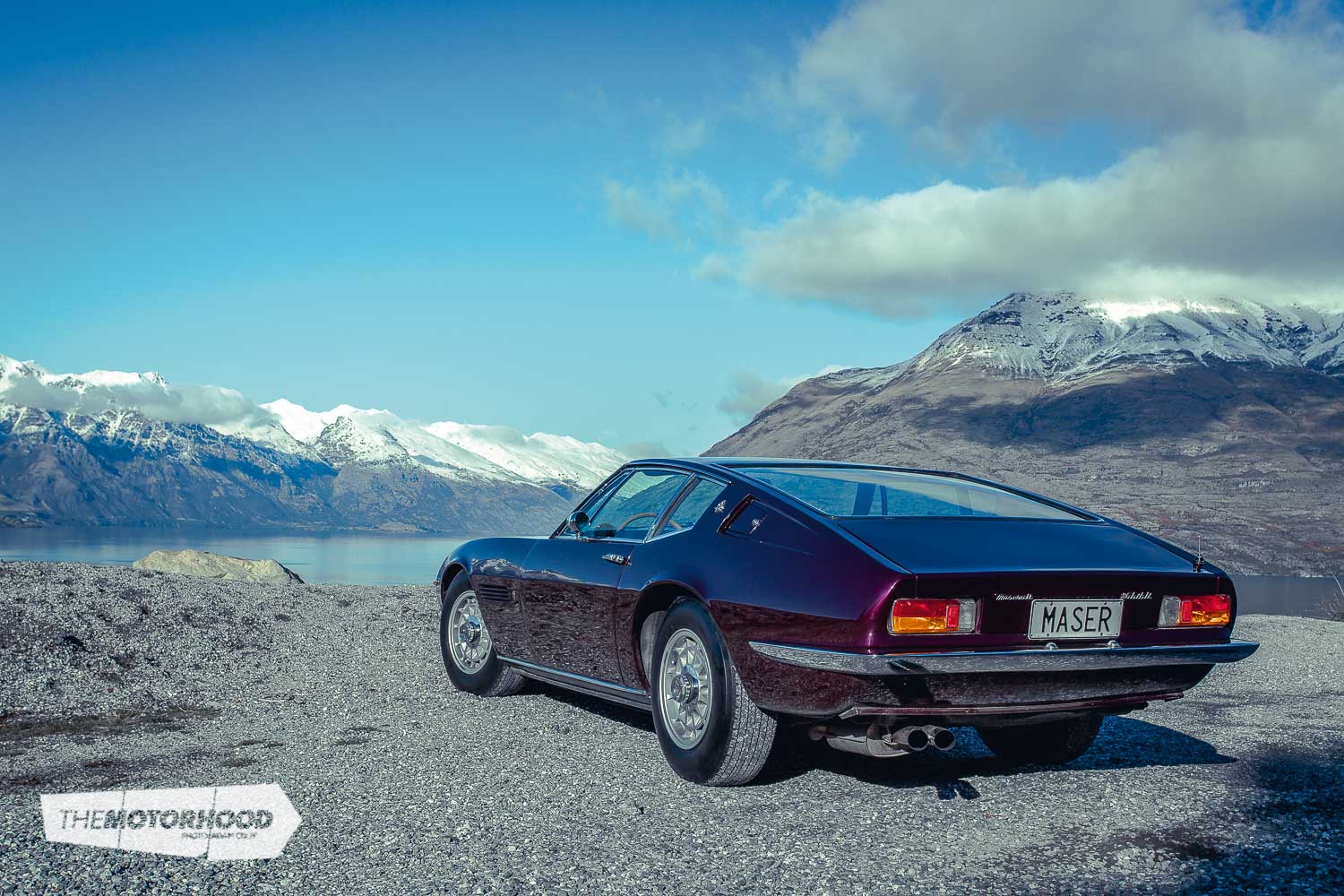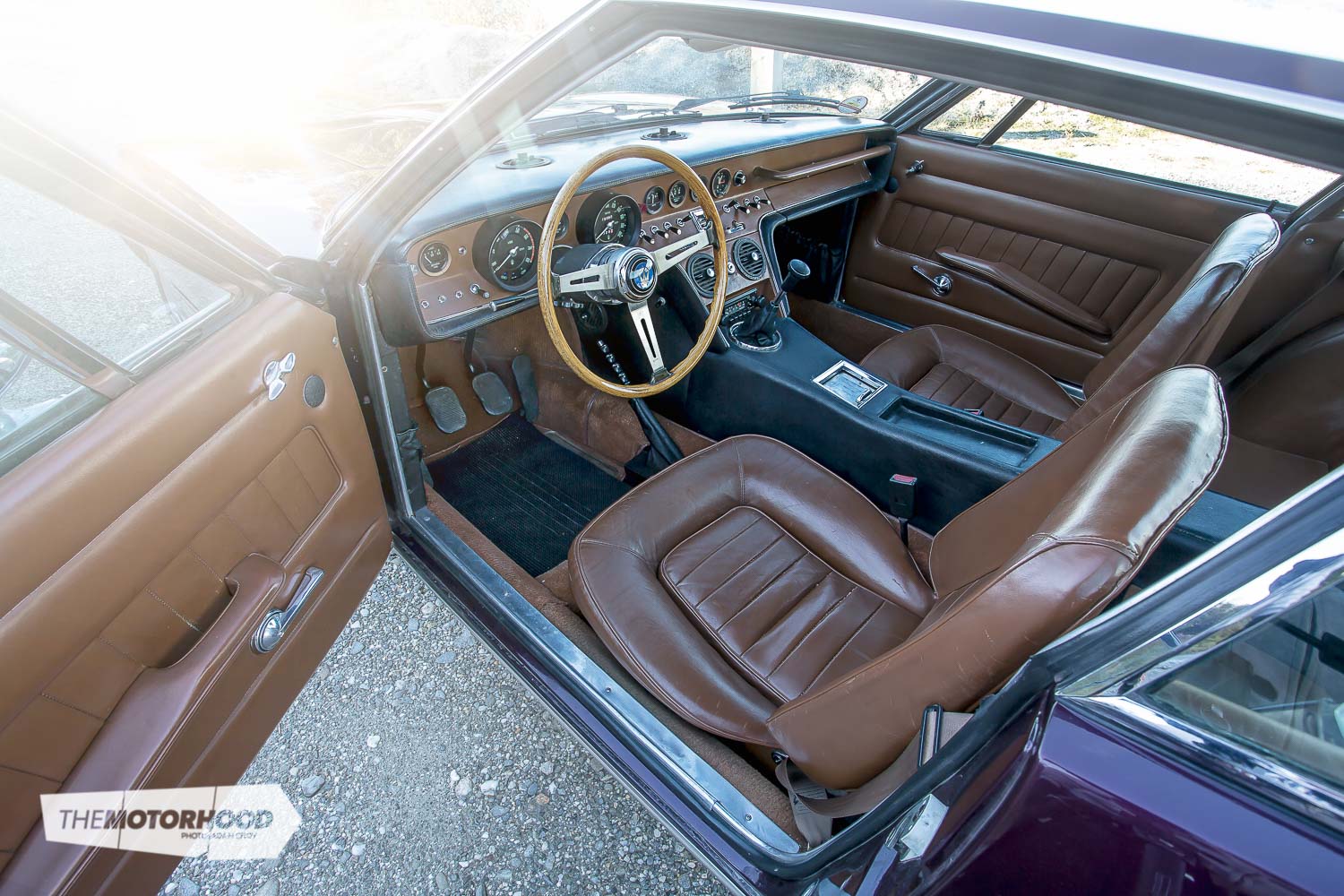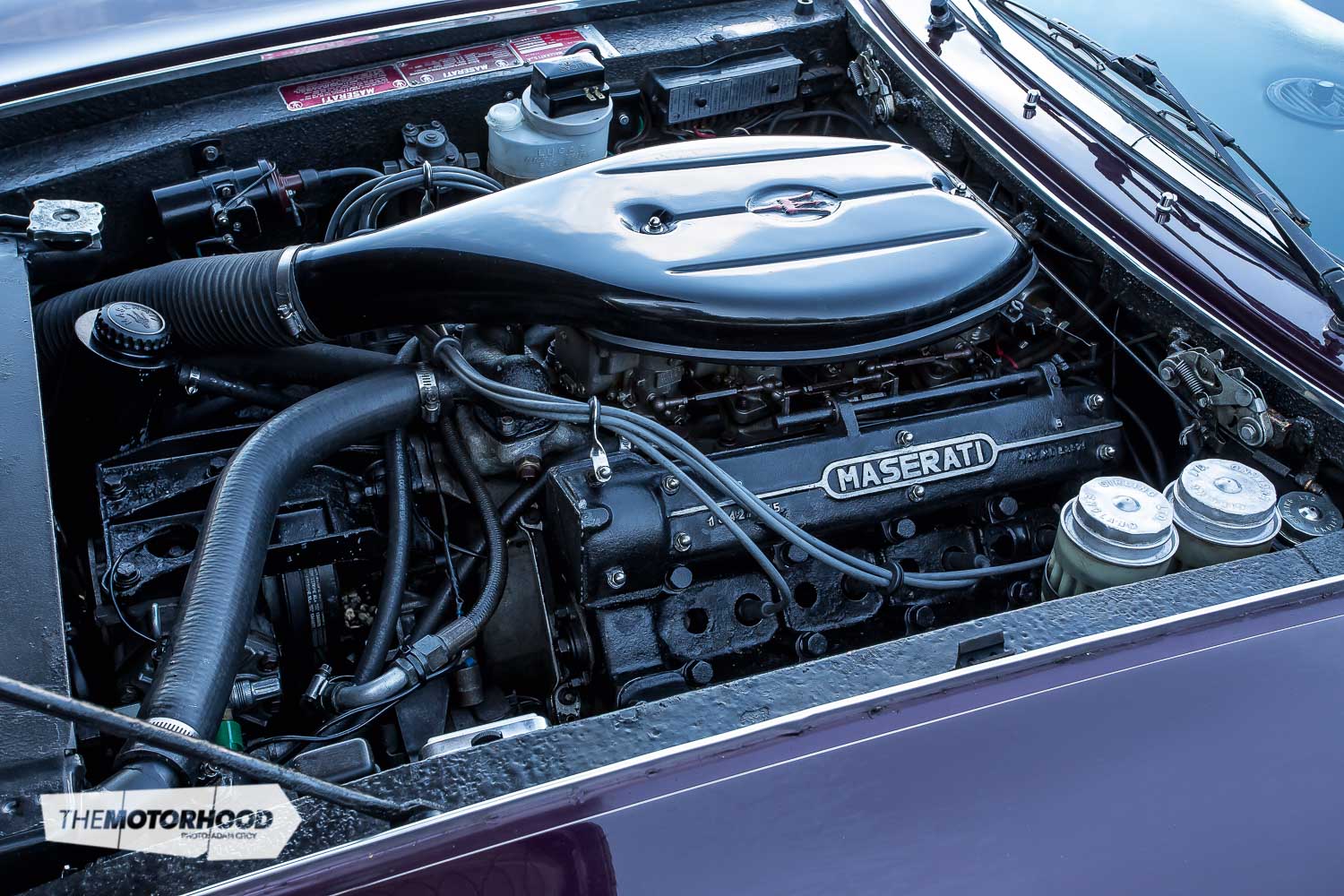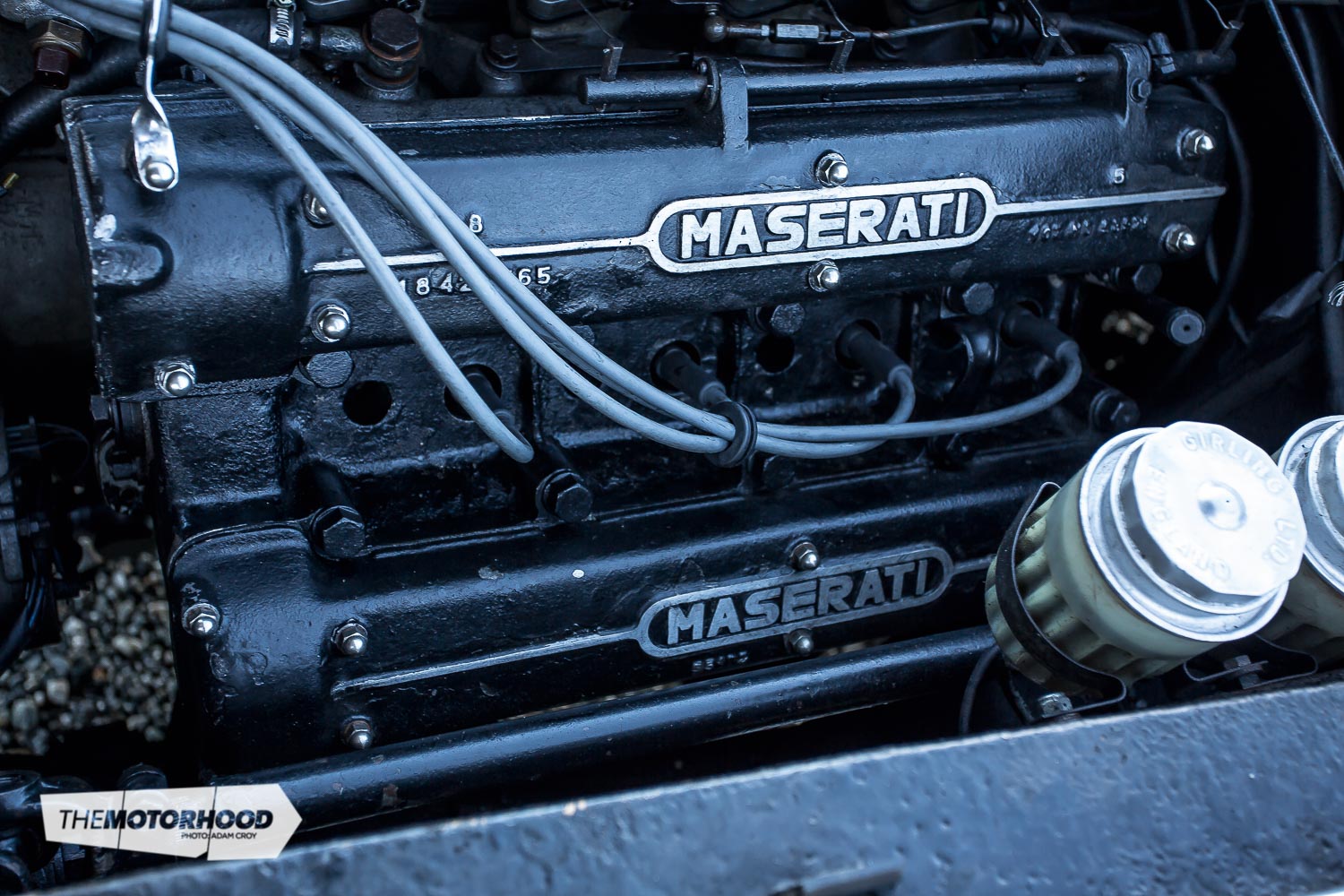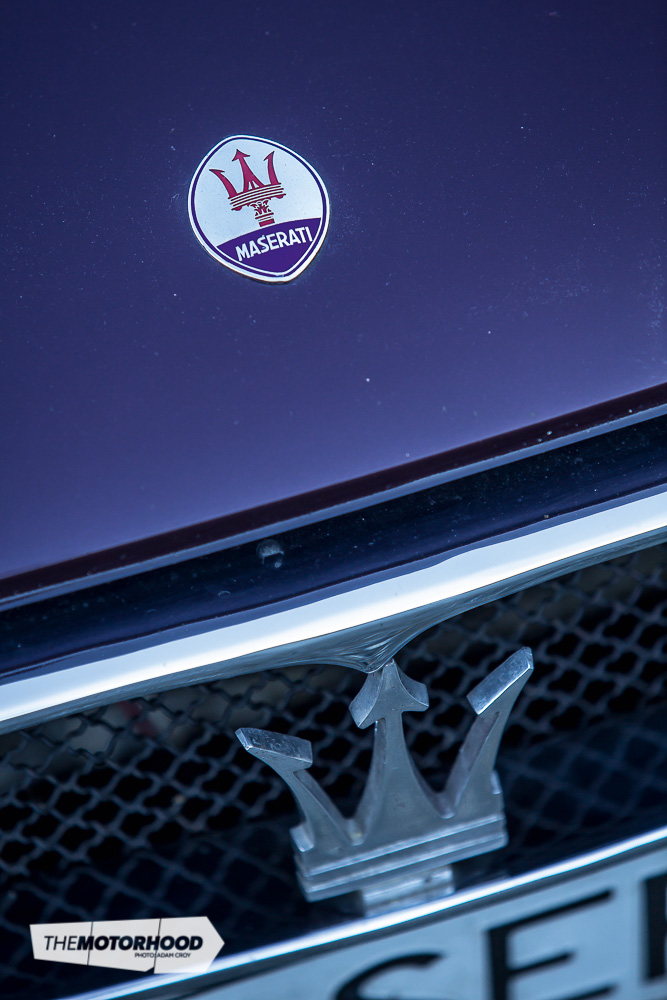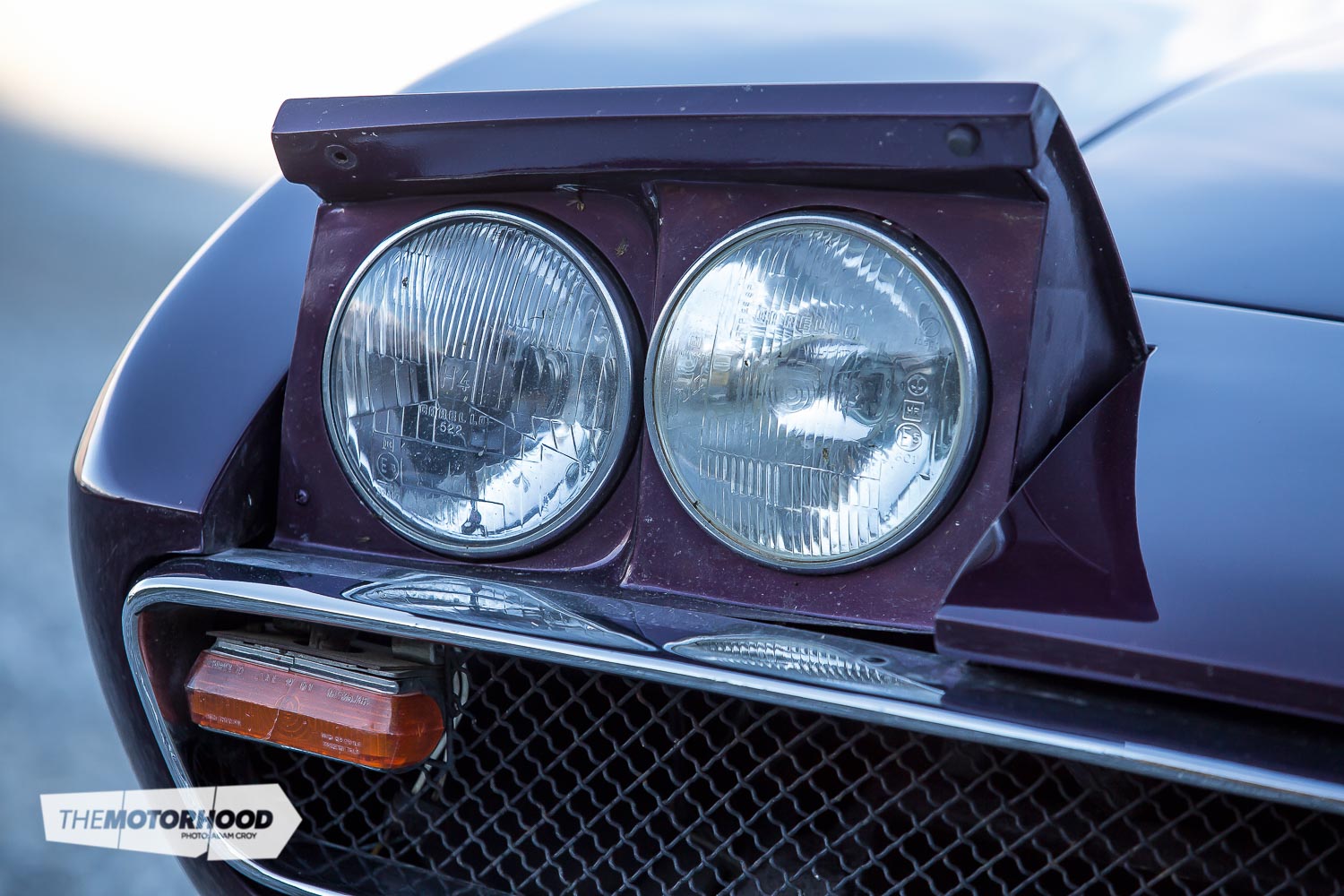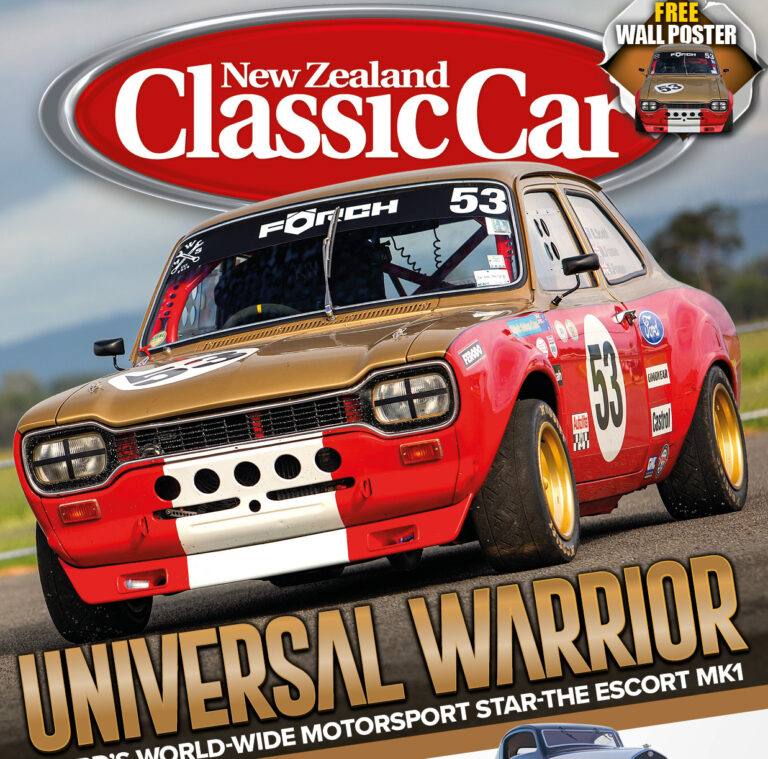
data-animation-override>
“Back to the swinging sixties with Maserati’s iconic supercar”
As always, when we head away from Auckland for a week or so to meet up with classic car owners around the country, we inevitably end up photographing enough wonderful cars to feature in the magazine throughout the entire year, or more.
Such is the case with this gorgeous Maserati Ghibli, one of the cars we were lucky enough to photograph in 2014. As you can tell, Queenstown’s unique location, nestled on the shore of Lake Wakatipu and overlooked by the majestic Remarkables Range, offered one of the best spots to photograph classic cars.
This gorgeous swinging ’60s supercar is owned by Michael Wyatt, an architect who resides in picturesque Queenstown. According to Michael, his mother tells the story of his first word — uttered when he saw a stout lady riding past on a bicycle — “Car!”
This was an obvious and very early sign of what was to follow, as over time Michael has built up an enviable collection of Italian cars — one of which, his 1958 Alfa Romeo Giulietta Spyder, was featured in the July 2007 edition of New Zealand Classic Car and, more recently, in our book, Classic Cars of New Zealand Volume One.
What makes a car eligible for Michael’s collection isn’t power or even age, but rather its other qualities which he finds appealing, and he appreciates good design from any era. And after all, if it was power that Michael was looking for then he certainly wouldn’t be restoring a 1938 Fiat Topolino.
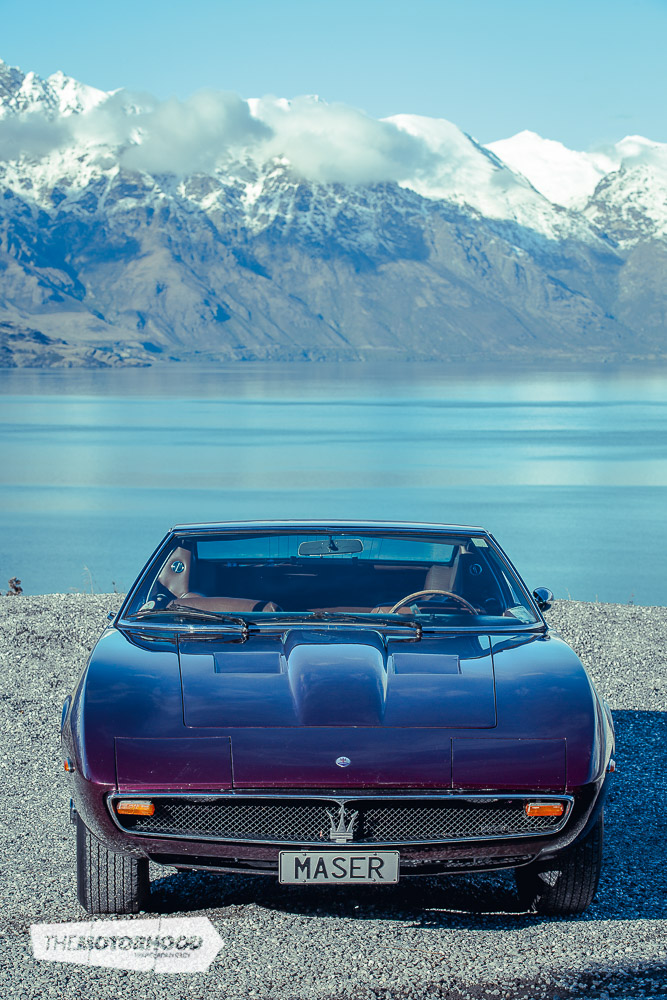
A Latin by the lake
One of the attractions of owning a Maserati is the pleasure of looking into the company’s long and interesting history. The founding brothers — Ernesto, Ettore, Alfieri, Bindo, Mario and Carlo — were strong on passion, if at times short on resources. It was one of the more artistic brothers, Mario, who designed the marque’s famous trident symbol, based on the fountain on Piazza del Nettuno in the center of Bologna.
One of Michael’s favourite local events is the biennial Latin by the Lakes — a relaxed drive on South Island roads for Italian cars regardless of age. In fact, it was at this event that he first saw this Maserati Ghibli, at that time owned by John Chivers, who imported the car from internationally-renowned classic and race-car broker, Fantasy Junction of California, in 1998.
The Maserati, AM115 352, was originally made ready for export from the Maserati works in Modena on December 22, 1967. According to Michael, the documentation is a little confusing as to whether the V8 engine fitted to the car is the 4.7 or the 4.9-litre version as used for the SS model. Since the engine number has ‘SS’ stamped on it, Michael believes it’s more than likely to be the 4.9-litre V8. Having said that, as the 4.9 SS Ghibli didn’t appear until 1970, the engine in Michael’s car may not be original. If it is an SS engine it was most likely sourced from a later Ghibli. However, Michael’s not too concerned, as there’s not much difference between the two V8s — the 4.9-litre only provides four kilowatts extra over the 4.7-litre, although the larger engine does deliver more torque.
Going back to the ’60s, the Maserati was air freighted from Milan to San Francisco during June 1968, and US$13,991 was handed over by Lauren Dennen, a hotel proprietor from Little River, California. That was, indeed, a lot of money back then — a similar amount would have bought a Ferrari Daytona or Lamborghini Miura.
The Ghibli obviously made a lasting impression on the new owner because he kept it for 19 years, until his death in 1987. The Maserati subsequently passed through a couple of hands before ending up at Fantasy Junction, and being acquired by the car’s first Kiwi owner.
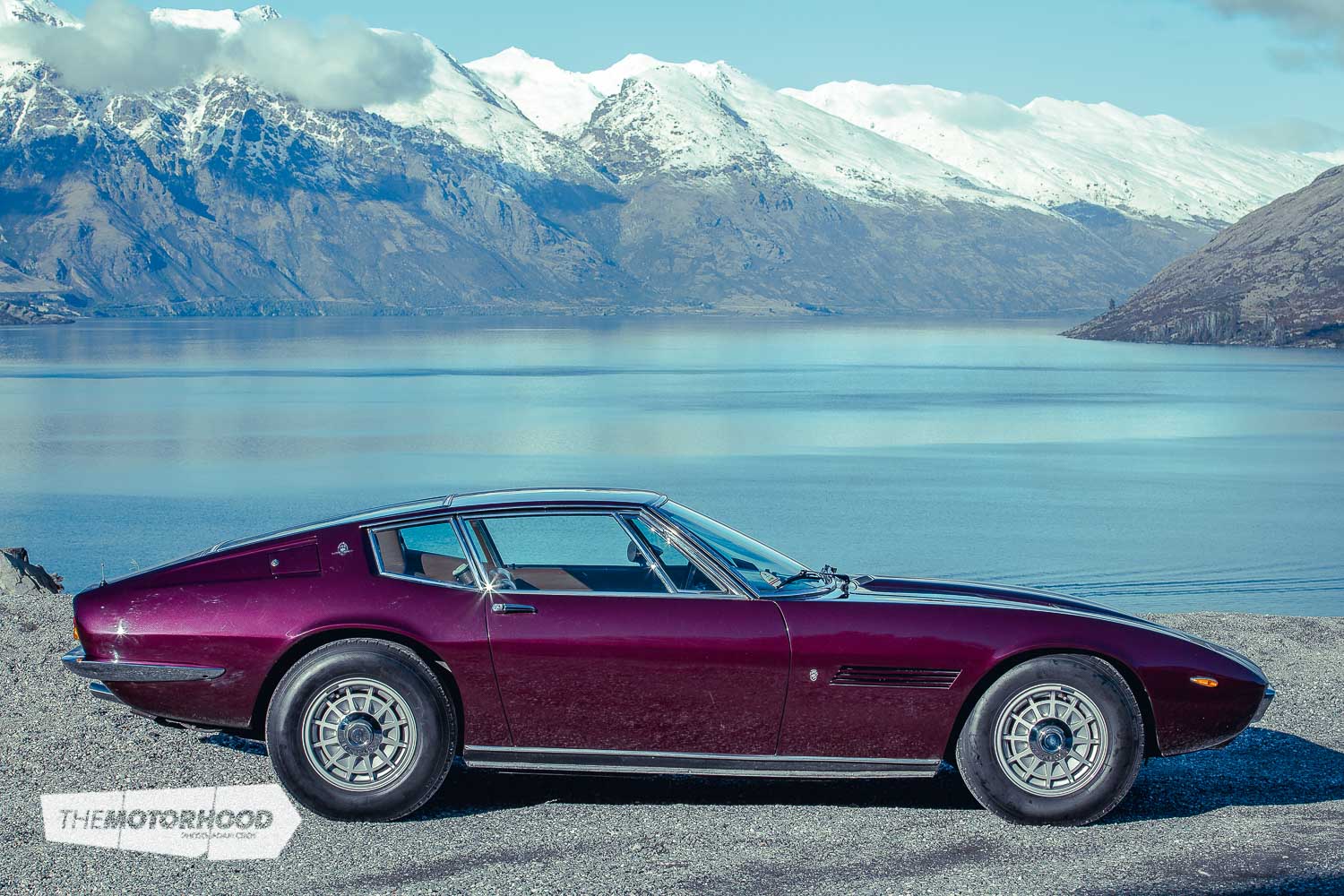
A hot wind
Maserati named a number of its cars after winds because, in its opinion, that’s what the cars go like — the wind! The Ghibli is a hot, dry, usually south to south-westerly dust-bearing desert wind that occurs in Libya throughout the year. The Maserati Ghibli was styled by Giorgetto Giugiaro, at that time employed by Carrozzeria Ghia. The car was built on a tubular chassis with steel bodywork as a sleek gran turismo vehicle, carefully and purposely crafted to sit as low as possible. Giugiaro, only in his early 20s during his time with Ghia, definitely came up with a design classic. It’s probably hard to imagine what it must have been like to see one in the metal back then, but it’s clear that the Ghibli impressed many people, including the late Henry Ford II, who was an early customer. Indeed, Ford would later purchase the Ghia name, but failed to take advantage of the company’s design skills, merely using the famous tag to add value to its standard products. Giugiaro, of course, went on head his own Italdesign company, and is still designing beautiful cars.
When choosing an engine for the Ghibli — designated as the Tipo 115 by the factory — Maserati went for a development of its dry sump, quad-cam racing V8, but with a capacity of 4.7 litres.
The Ghibli was one of the fastest cars of its era, despite the fact that it was saddled with an archaic live rear axle and leaf springs. The coupé was joined, in 1968, by the Ghibli Spider — with both models later receiving the enlarged, 4.9-litre version of the V8 to become the Ghibli SS models.

Sixties supermodel
The Ghibli’s dry-sump V8 engine allowed Giugiaro to keep the bonnet as low as possible and that, together with concealed headlamps, meant the Maserati’s frontal aspect tapered down to a shark-like nose with a slight power bulge in the centre of the bonnet, and venting gills on each flank. The subtle side vents add detail to the car’s handsome profile, lines that are further enhanced by the way the light plays on our featured example’s metallic paint. These cars definitely benefit from this type of paint as they bring Giugiaro’s subtle modelling to life. The car’s long, flat roof is rather deceptive, and incorporates an extended lazy curve. The top edge of the large rear window aligns perfectly with the chrome strip in the side glazing in a masterful handling of three dimensions. There is a recessed tapering element behind the windows that creates negative pressure, with the aim of removing stale air from the cockpit through small internal swivel vents. It’s a simple, effective shape that has been enhanced with careful, well-considered detailing.
The interior has seats for only two people, with a large flat area behind to stow luggage. Following ’60s fashion, the Ghibli’s dashboard is festooned with a myriad of gauges and toggle switches — ergonomics isn’t something that Italian supercar makers of this era really understood. However, there’s no doubting the car’s style, exemplified in this case by the sumptuous biscuit leather trim that remains completely original, testament to the care which has obviously been lavished on the vehicle throughout its life.
Whilst this Maserati Ghibli has never been restored, it is on its third colour. The original factory hue was an undramatic-sounding metallic beige. So it’s hardly surprising that the car was later repainted in red. Today, the Ghibli comes with a deep and lustrous coat of metallic aubergine paint. Since purchasing the Maserati from John Chivers, Michael has carried out some detailing improvements, including a refurbished under-bonnet cover, repainted air cleaner and wheels, a new stainless-steel exhaust, door rubbers and new electric window mechanisms, to name a few.

A muscle car with class
Michael finds the US-based Maserati Club International to be a wonderful source of information and parts for these cars. The technology in vehicles of this era is relatively simple, and the range of available parts is very good for such an exotic car.
Maserati was a small company and certainly made use of everything that was available at the time. The Ghibli’s front suspension, for example, is from a MkI Jaguar whilst the differential is a 3:31 Salisbury unit, and the brakes are Girling ventilated discs. The tail lights come courtesy of the contemporary Alfa Romeo Berlina, while the truck-like gearbox is a five-speed ZF, the latter being de rigueur for many supercars of the same era as the Ghibli.
This Ghibli is in beautiful condition, but not so pristine it can’t be used for fear of deterioration. Michael likes to use his cars and says, “What man has made, man can make again.” In most cases, cash to hand, this is true.
Michael tells us that the Maserati is superb to drive through the wide open spaces of Central Otago where, as we all know, the roads are wonderful and the population low — a perfect combination for spirited touring.
According to Michael, there’s nothing nicer than wafting through the wide-open Maniototo with snow-capped ranges all around, raw mechanical noises emanating from up front, and that big-torque V8 exhaust rumble wafting into the clear air.
As Jay Leno once said of the Maserati Ghibli — “It’s like an American V8 that’s gone to college!” We couldn’t agree more.
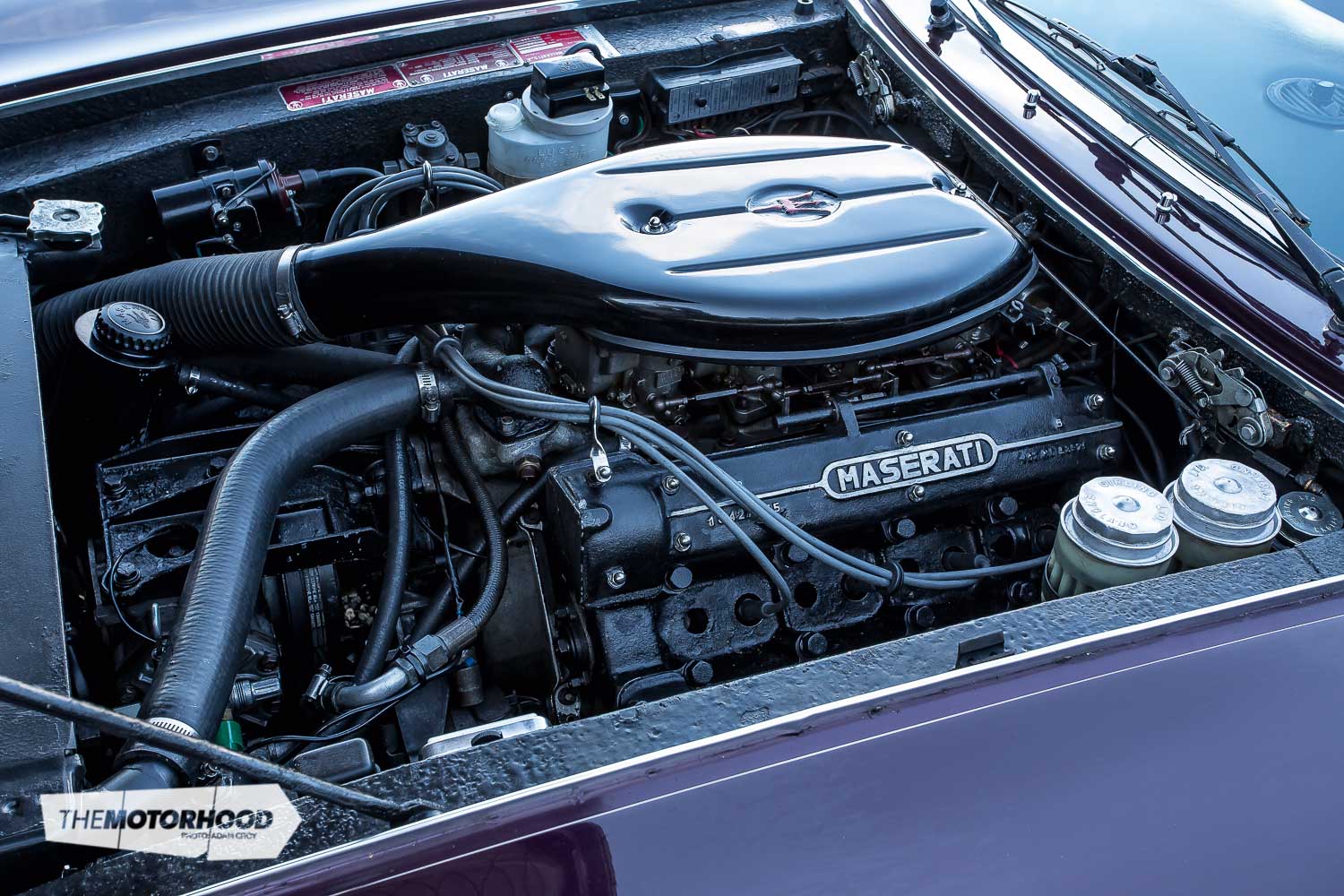
Carrozzeria Ghia
Established a century ago, the Turin-based company, Carrozzeria Ghia SpA (the company’s original name being Carrozzeria Ghia & Gariglio) is one of the most famous Italian car design and coach-building organizations.
Initially it constructed lightweight aluminium-bodied cars, and in-between the two world wars designed special bodies for Alfa Romeo, Fiat and Lancia, one of the most famous being the Fiat 508 Balilla sport coupé of 1933.
It was during tough times in the Second World War that Ghia diverted its skills into making carts for the Italian Army, and manufactured bicycles in order to survive.
Unfortunately, its facility was completely obliterated in 1943 during an Allied bombing raid, resulting in a complete destruction not only of buildings, but all the tooling and designs built up over more than a quarter of a century, gone forever. It was this catastrophic loss and stress that ultimately caused the untimely death of Giacinto Ghia, who suffered a heart attack whilst supervising the rebuilding of the Turin factory.
Ghia’s wife, Santina, adamant that the family name should continue, offered the remains of her husband’s company to two of his closest associates, Giorgio Alberti and Felice Mario Boano, the latter having been chosen as a successor by Ghia before his death.
After World War II and a subsequent rebuild of the company’s factory, many foreign businesses ordered Ghia designs — these included Ford (Lincoln Futura) and Chrysler (the Norseman) — in fact, Chrysler and its designer, Virgil Exner, became a close partner with Ghia for 15 years, resulting in 18 Chrysler Ghia Specials between 1951 and 1953. Other Ghia designs included Volkswagen’s Karmann Ghia and a number of Ghia-bodied Ferraris. Production by Ghia was always in very low numbers, giving the company’s products greater exclusivity over rival Italian coachbuilders.
Chief engineer, Luigi Segre, took over the reins in 1953 after differences with Felice Boana, who moved to Fiat.
After Segre’s death in 1963, Ghia was sold to Ramfis Trujillo, who later sold it on to Alejandro de Tomaso in 1967, but he had difficulty in running Ghia profitably, and in 1970 sold his shares to the Ford Motor Company. During this transition period, Ghia became partially involvement with De Tomaso’s Ford V8-powered Pantera.
Today, the famous name of Ghia has been downgraded to become a mere trim level designation for Ford’s top-line models.
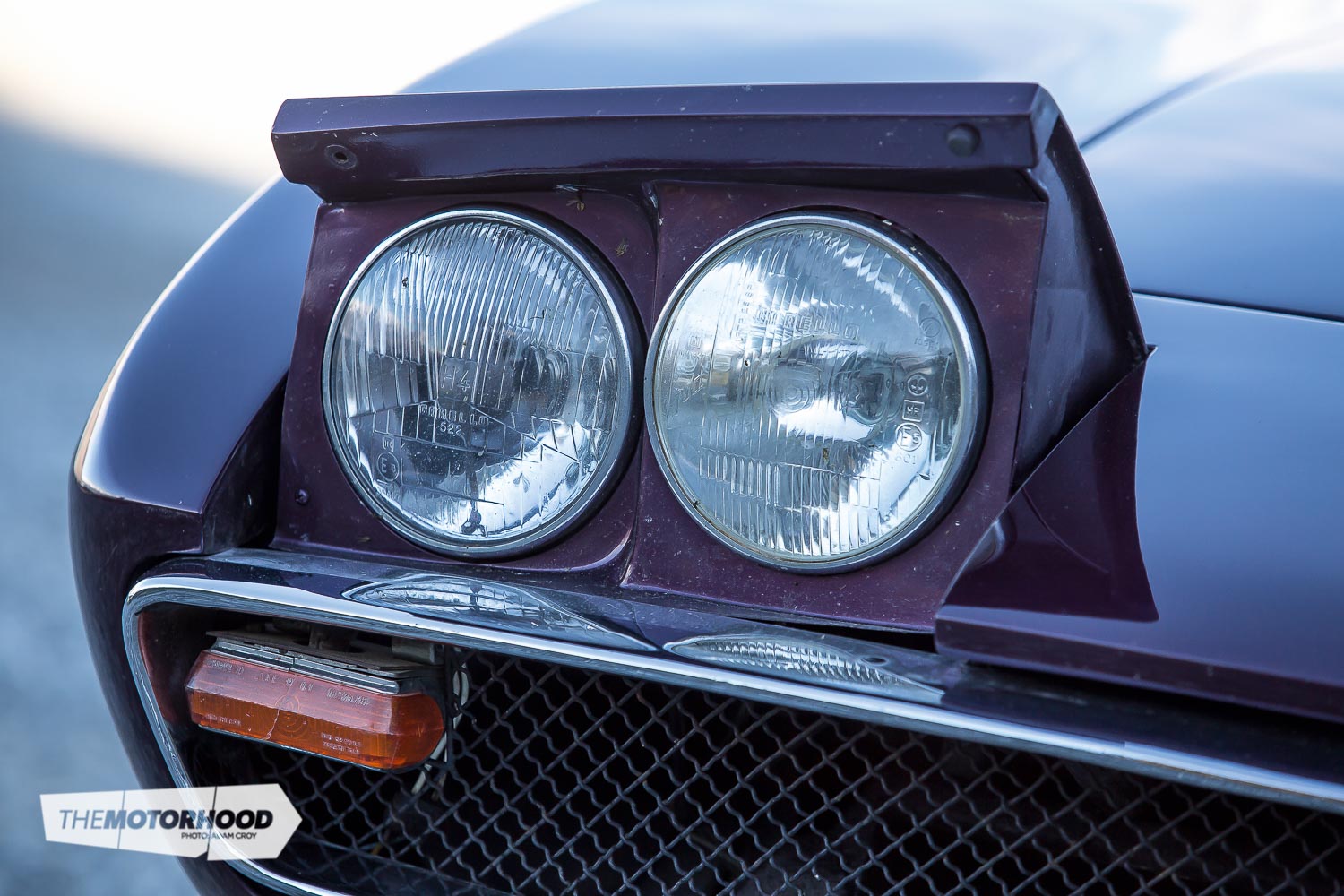
100 years and counting
This year, Maserati celebrates its 100th anniversary — the company having been established on December 1, 1914, in Bologna, Italy, by Alfieri Maserati and his brothers. Today, the company’s headquarters and main production location are based in Modena, with a second state-of-the-art production facility being opened in Grugliasco, near Turin in 2013. Maserati has been owned by the Italian car giant Fiat SpA since 1993.
Having been through many well-documented ups and downs, Maserati is now enjoying a very stable and profitable period, with models such as the successful GranTurismo and GranCabrio, the latest generation of Maserati’s flagship sedan, the Quattroporte, and the recently-arrived sports executive sedan, the new-generation Ghibli.
1967 Maserati Ghibli
- Engine: Maserati V8
- Capacity: 4719cc
- Bore/stroke: 93.9x85mm
- Valves: DOHC per bank, two valves per cylinder
- Comp ratio: 8.5:1
- Max power: 246kW at 5500rpm
- Max torque: 441Nm at 3800rpm
- Fuel system: Four Weber 38 DNCL twin-choke
- Transmission: ZF five-speed manual
- Suspension F/R: Independent by upper and lower A-arms, coil spring, and anti-roll bar / live axle, single torque reaction arm, semi-elliptic leaf springs, anti-roll bar
- Steering: ZF recirculating ball
- Brakes: Disc/disc
Dimensions:
- Overall length: 4765mm
- Width: 1829mm
- Height: 1178mm
- Wheelbase: 2591mm
- Kerb weight: 1850kg
Performance:
- Max speed: 265kph
- 0-100kph: 6.6 seconds
- Standing quarter-mile: 14.3 seconds
- Production 4.7/4.9 Ghibli (1966–1973): 1966–1973, 1274 (including 125 Spiders)
This article was originally published in New Zealand Classic Car Issue No. 286. You can pick up a print copy or a digital copy of the magazine below:
